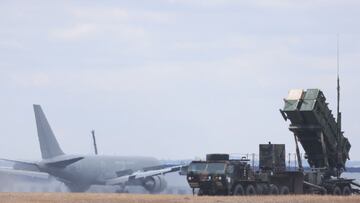What is an anti-radiation missile?
Anti-radiation missiles work by homing in on a radio emissions source and destroy it to limit communication between a military enemy during a conflict.


Radar, which stands for radio detection and ranging, was one of the most important inventions of the twentieth century. In the military context, radar, allowed for increased communication across the conflict zone and for the tracking of enemy and non-enemy weapons, planes, boats, submarines and more.
To take out the radar capacity of military enemies anti-radiation missiles were developed.
In 2013 a member of the Polish Air Force Command, Stanisław Czeszejko, published an article on how these missiles can be used in the International Journal of Electronics ad Telecommunications.
To allow "for the free operating of friendly aircraft within the enemy’s airspace" an anti-radiation missile can be used to destroy the radars of the enemies. This military weapon was designed to take out radar targets "without entering the striking distance of the ground elements of the enemy’s air defense system (rockets and barrel artillery)."
Does the Ukrainian military have anti-radiation missiles?
Both the Ukrainian and Russian armies have access to this type of weapon. However the power of each country's anti-radiation missiles differ widely.
There are four varieties of this weapon that can take out radar systems:
How can these missiles be launched?
- Surface to air
- Air to surface
- Surface to Surface
- Air to air
The Soviet Union developed various anti-radiation missile, one of the most famous being the Kh-58. NATO, reportedly, nicknamed the missile the “Killer” because of its power to wide out radar capabilities. In more recent years, Russia has updated this technology and the Kh-31 is becoming the dominate anti-radiation missile used by the Russian military. Kh-31 is an air to surface missile, meaning that it is launched from the ground and can take out missiles and also is considered an anti-aircraft weapon.
A video of the remains of a Kh-31 has come out of Ukraine which provides evidence that the Russian military has used the weapon during the invasion.
Related stories
The Ukrainian military has access to a far less powerful anti-radiation missiles, like the S-300, a Soviet style surface to air missile. This means that unlike those in Russian control, the Ukrainian's can try and block incoming missiles but it is much harder to takeout Russian radar as they do not have the advantage of flight. This means that the Ukrainian forces would have to get much closer to a target, making the soldiers and weaponry more vulnerable to attack.
Has Russia used these weapons before?
Yes. During the Russian invasion of Georgia in 2008 anti-radiation missiles were used "to eliminate all Georgian radars" in "a relatively short time."

